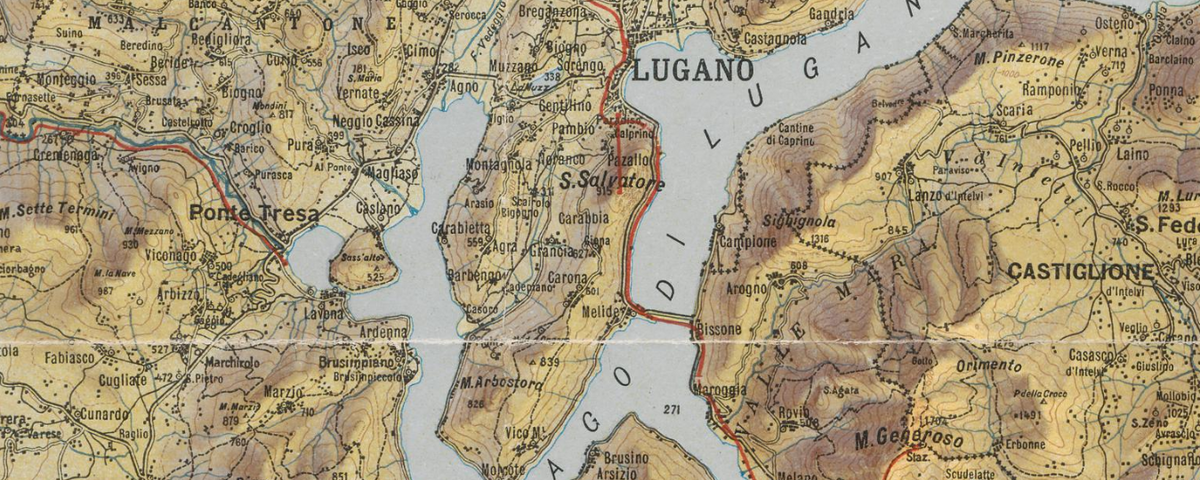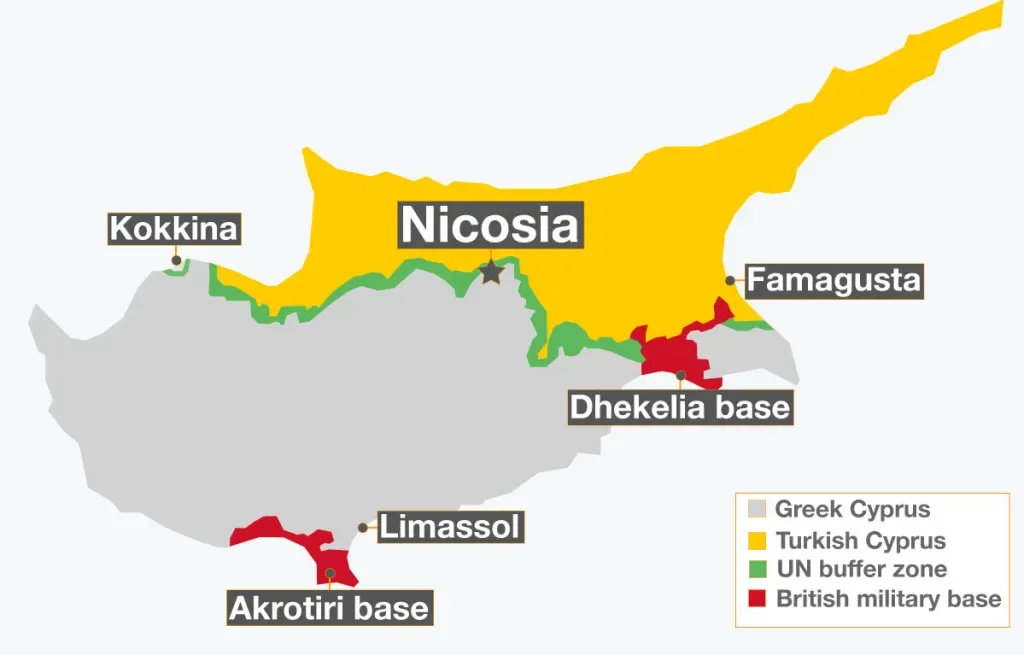Interesting borders around the world

In a recent post, I wrote about the importance of defined territory for the legitimacy of countries around the world. Sovereignty starts and ends within international borders - some marked by natural phenomena, such as rivers, mountains, forests or the sea, others are man-made, like those straight lines we find on maps of countries in Africa or the Middle East, the result of historical and political changes over thousands of years.
There are a number of borders around the world that make you question how they came to take shape in the first place. These are some of them.
Cyprus – Northern Cyprus
Cyprus has been divided into two de facto countries ever since Turkey invaded the island in 1974. The northern half is controlled by Turkish Cypriots in a semi-presidential political system called the ‘Turkish Republic of Northern Cyprus’. This entity, however, is only recognised by Turkey, and all other UN Member States, recognise the whole island as part of the Republic of Cyprus.
The westernmost point of the so-called ‘Turkish Republic of Northern Cyprus’, is the Kokkina exclave, cut off from the main part of Northern Cyprus after Turkish forces failed to connect the borders during the 1974 invasion, as seen in the image below.
Tensions about this exclave started earlier in 1964 after the Greek-Cypriot government thought that the deepwater port at Kokkina was serving as an illegal port of entry for weapons for the Turkish-Cypriot Community. In the 1974 invasion, capturing Kokkina was one of the main objectives of the Turkish invading force and while they did succeed in taking the town, the Turkish military failed to connect the exclave to the northern part of the country under their control. This led to an unusual situation whereby the town, surrounded by a UN-mandated buffer zone, is cut off from the northern part of the island.

Austria – Germany
In 1342, an Austrian farmer bought a piece of land on the border from a German lord. That land, which today includes the town of Jungholz, remained part of the Austrian Tyrol after a treaty signed in 1844 divided the surrounding territory between Germany and Austria.
The border between Jungholz and the rest of Austria is connected by a single point on top of a mountain called Sorgschrofen, and the only access for locals is a road through Germany. Due to this peculiar situation for Jungholz and its residents, the town has both Austrian and German postcodes and is considered a free trade area with a thriving financial sector due to loopholes associated with German financial regulations.
During the 2020/2021 Coronavirus pandemic, when the Austrian government mandated quarantine restrictions for citizens and tourists coming in from other countries, separate regulations for the residents of Jungholz had to be created so that they would be able to travel across international borders to reach their hometown without having to quarantine.

Zambia – Botswana
In May 2021, the Presidents of Zambia and Botswana inaugurated the Kazungula bridge, a $260 million, 923-metre long crossing that traverses the Zambezi river and the 15 metre long border between these two countries.
The bridge, which was financed by both Zambia and Botswana, as well as the African Development Bank, the Japan International Cooperation Agency, and the and the EU-Africa Infrastructure Trust Fund, will help the two countries boost the trade between them, and serve as an important junction between central and southern Africa, which has previously been accessible through Beitbridge border crossing between Zimbabwe and South Africa, where transport spends hours, if not days, queuing to cross.
This is also why former Zimbabwean President Mugabe opposed the project at all costs - he feared that a road connection between Zambia and Botswana could see Zimbabwe lose its toll on that traffic, which led the bridge to be built in a curve in order to avoid Zimbabwean territory.
The border point here was a geopolitical issue between the four surrounding countries for a long time and led to an armed confrontation in the 1970s. The white minority-ruled Namibia (then occupied by South Africa), and Rhodesia (as Zimbabwe was named), claimed that the border is a quadripoint where all four meet and therefore they controlled what happened on the Zambezi River. Botswana and Zambia argued that there is in fact a border connection between the two. Today, following political changes in both Namibia and Zimbabwe, all four countries better understand the significance of having an additional border crossing for inter-regional trade.

Italy – Switzerland
Another interesting border I have been to is the one between Italy and Switzerland, or more specifically at Campione d’Italia. Campione, as the town was named before the 1930s, is an Italian territory that rests within the borders of Switzerland, in the southern canton of Ticino.
The town has had special status since the 1st Century when the ruler of the region at the time gave the territory of Campione to the Monastery of Sant‘Ambrogio in Milan, in whose hands it remained for 1020 years. In 1797, Napoleon Bonaparte arrived in today's northern Italy, declaring the foundation of the Cisalpine Republic and annexing Campione. A year later, Ticino was made a federal Canton, becoming part of the Swiss Confederation, but the inhabitants of Campione chose to remain part of Lombardy which itself later became part of Italy in 1859.
In 1861, the Treaty of Varese, which had delineated the border between Switzerland and Italy was revised by both countries. Up to this point, Campione included the opposite coast of San Martino, however as a result of the revision the new border of the town was moved to the middle of the lake. In return for this loss of land, Campione was given free access to the Swiss market and services.
This meant that while residents pay their taxes in Italy, most public services were carried out by Swiss providers. On 1st January 2020 the town joined the EU Customs Union, and residents starting paying VAT at a much lower rate than what other Italians pay.
